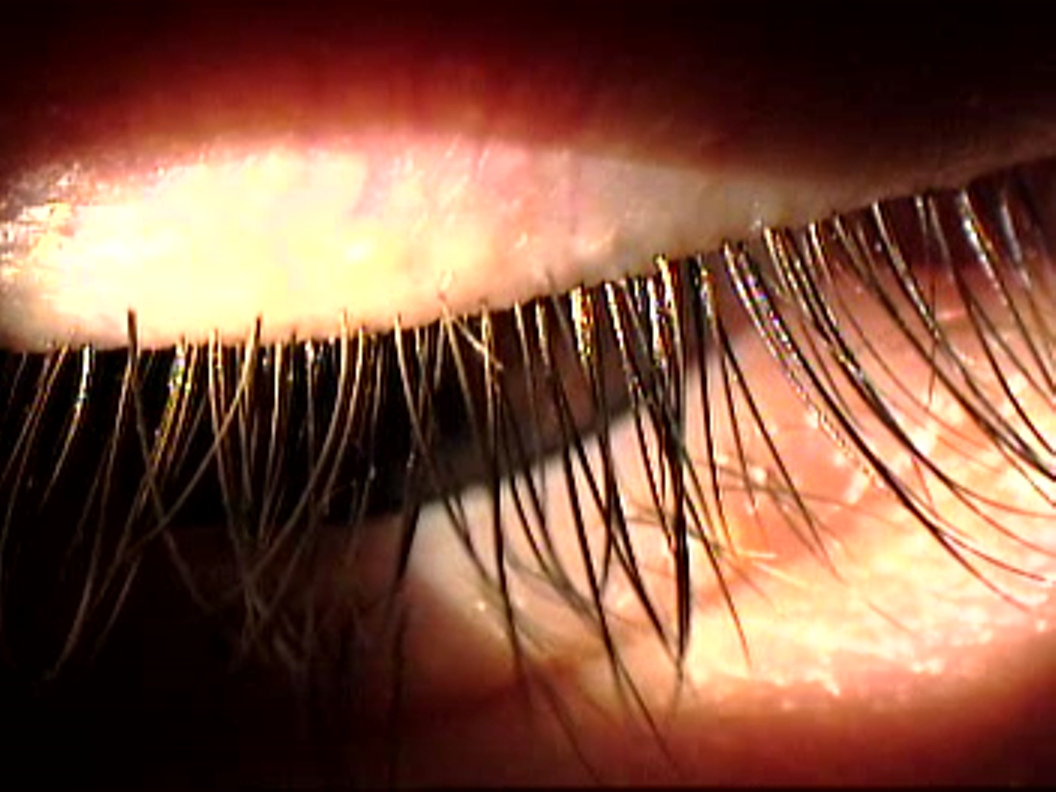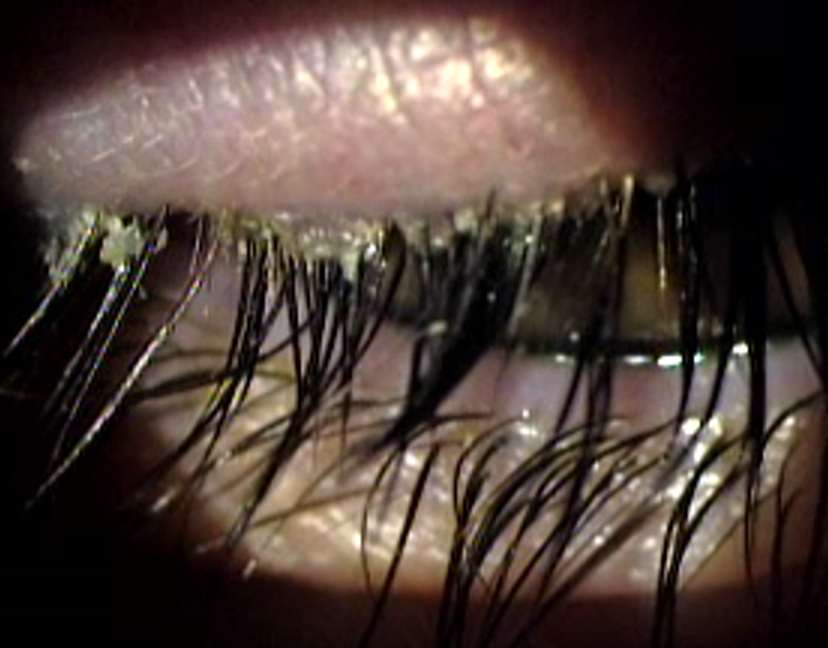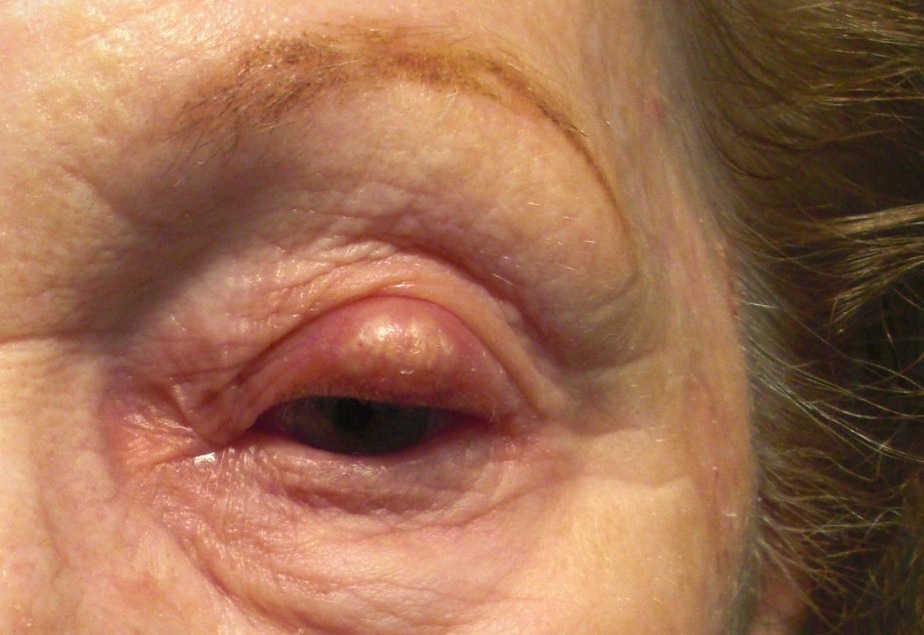Blepharitis or inflammation of the eyelid is a very common condition. It is a dandruff-like scaling of the skin on the lid margins which results in soreness, redness, and crustiness. In its most severe stages, it can affect the lash follicle and cause the lashes to fall out.
- Blepharitis usually occurs when the glands leading to the hair follicle at the base of the eyelash secrete too much oil, become clogged, or become infected with bacteria.
- Blepharitis is not contagious but can be chronic, occurring in conjunction with excessively oily facial skin.
- Can appear as if one has “pink eye”
- Can cause dry eye
- Can cause tearing
- Can cause a foreign body sensation
- Can cause intermittently blurred vision
- Can be the cause of STYES: A stye is essentially a painful pimple on the eyelid caused by a blocked oil gland.
A closer look at Blepharitis
- Blepharitis affects both the upper and lower eyelids. The inflammation may be mild and simply consist of redness and scaling of the lid margin or it may be more severe, leading to lash destruction and deformity of the lid.
- Can be caused by bacteria
- Can be caused by the Demodex mite (type of lice)
- Can be caused by excess oil production
- Often associated with rosacea
- Blepharitis can occur in individuals of all ages, particularly those with abnormally oily skin on the scalp, face, and eyebrows.
- You will be able to see if you have blepharitis either by photography or videography, thus allowing you to better understand your condition, and be able to treat it more successfully.

Normal

Blepharitis with crusty debris
around the base of the eyelashes
Treatment for Blepharitis
- To loosen up the matter collected around the eyelashes, place warm compresses on the eye from 5 to 10 minutes.
- Depending on the type or cause of your blepharitis, immediately after soaking, the eyelids should either be:
- Rubbed daily with a mild baby shampoo, (no burning) on a washcloth for 30-45 seconds;
- Rubbed with antibacterial pads;
- Should have some form of tea tree oil applied (If the cause is the demodex mite)
- One should try to gently remove any crusting and dry flakes each day with a warm, moist washcloth.
- Individuals with severe blepharitis will require other types of treatment, including antibiotics or steroid eye drops/ointment, or a regimen of doxycycline and/or Omega-3 therapy
Watch for these conditions
While blepharitis is uncomfortable and often chronic, it is treatable. If you are experiencing dandruff-like scaling of the skin on your eyelid margins, have excessively oily facial skin, or are susceptible to seborrhea, you may also have blepharitis. Avoid rubbing your eyes or exposing them to irritants like chemical fumes, smoke, and smog. Rubbing your eyes can cause some of the matter to fall into your eye causing further irritation and possible pink eye. Avoid harsh cleaners and cigarette smoke and colored tissue which can further aggravate the sensitive lid area.
If you have any concerns please call the office for an evaluation. It usually does not go away on its own,
Daily Eyelid Hygiene: An Important Step to Healthier Eyes and Fewer Styes

Blepharitis can be the cause of styes
- Either place a warm compress on the eye for a minute or two or let the warm shower run on your closed eyes for the same amount of time.
- For about 30-45 seconds, gently rub the margins (edges) of the eyelids with a washcloth. Use sting-free baby shampoo or a prepared, over-the-counter lid scrub found at your pharmacy. At the very least, you should rub the eyelid margins with just the washcloth while bathing
- Thoroughly rinse both eyelids with warm tap water and blot dry.
- Apply any medication prescribed by your eye care practitioner. Your eye care practitioner will inform you how long to continue these procedures. Notify your eye doctor if the condition worsens or fails to improve.

